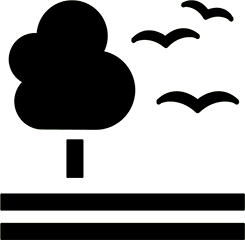First Place - Middle School
UN Sustainable Development Goals Addressed
-

Goal 15: Life on Land
2022 Youth Design Challenge
This design concept was developed by participants in the Institute’s Youth Design Challenge. The descriptions below are from the team’s competition entry materials.
School: River Trail Middle School
Location: Duluth, Georgia, USA
Coach: Marwa Crisp
Team members: Aaryan Senthilkumar, Kovid Cerejo
Video Pitch

Innovation Details
In recent years, the problem of wildfires in California has increased as residents have witnessed thousands of wildfires and millions of acres burned. The Fire Forewarner, developed by Aaryan & Kovid’s Team, is a device that aims to help bring those numbers down. The design concept is a solar-powered box that contains a protected circuit board and flame retardant capsule with a high temperature glue on the lid. When the temperatures reach high enough to melt the glue on the lid, the box opens and immediately sends a signal to the nearest fire department warning them of the fire, and the capsules are used to contain the fire in the meantime. The Fire Forwarner includes inspirations from Banksia seed pods, which release seeds when the cones are heated to a certain temperature, and the Crossopteryx bark, which was used for insulation of the materials inside the box.
What is the problem your team solved for this challenge? What is the problem addressed? How is the problem connected to the selected SDG?
Our team decided to solve the problem of California forest fires not being detected in time. The thing is, forest fires start out small, but they are not detected in time for it to be extinguished quick enough. The SDG category that our problem falls into is number 15, “Life on Land”. Our problem connects to it because that SDG’s mini goals include sustainably managing forests and halting loss, which can be helped by detecting and putting out fires before they get too big and are increasingly harder to stop.
How was your solution inspired by nature? What (at least two) organisms did you learn from? How effectively did you combine the biological strategies for the final design?
We found two main biological strategies to include: The Banksia seed pods and the Crossopteryx tree bark. The seed pods had a unique solution to detecting fire: Its pods were held together by a resin, which melted and opened the pods when it was exposed to fire. Also, the bark insulated the tree, so that it would not catch fire if it was alive. We included this in our design by making the box open with heat via melting glue and the exterior, interior, and electronic parts being insulated from fire with fiberglass and other similar materials.
What does your design solution do? How does it solve or mitigate the problem you selected? How did what you learn inform your design?
Our design mitigates the problem of California forest fires by the lid opening in fire temperatures, triggering a Bluetooth chip that alerts the firefighters of the fire. In the meanwhile, it helps alleviate the fire by releasing fire resistant pellets onto the ground when fire is detected. We learned many things along the way that changed our design. First, we realized that mechanical solutions are cheaper than others, so we changed our design to be more mechanical. Additionally, we realized that it would need power constantly, so we added solar panels to power the device for a long time.

